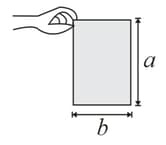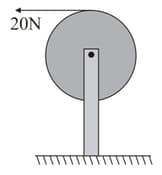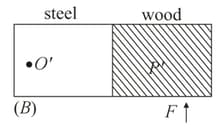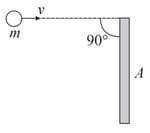Embibe Experts Solutions for Chapter: Rotational Mechanics, Exercise 1: Exercise-1
Embibe Experts Physics Solutions for Exercise - Embibe Experts Solutions for Chapter: Rotational Mechanics, Exercise 1: Exercise-1
Attempt the free practice questions on Chapter 10: Rotational Mechanics, Exercise 1: Exercise-1 with hints and solutions to strengthen your understanding. Beta Question Bank for Engineering: Physics solutions are prepared by Experienced Embibe Experts.
Questions from Embibe Experts Solutions for Chapter: Rotational Mechanics, Exercise 1: Exercise-1 with Hints & Solutions
A rod is attached to a fixed point using a light rope The other end of the rod is sitting on ice with negligible friction and the system is in stationary position. Which of the following can be the equilibrium configuration of this system?
A person supports a book between finger and thumb as shown (the point of grip is assumed to be at the corner of the book). If the book has a weight of then the person is producing a torque on the book of

A string is wrapped around the rim of a wheel of moment of inertia and radius The wheel is free to rotate about its axis and initially the wheel is rest. The string is now pulled by a force of The angular velocity of the string after seconds will be :-

In the figure half of the meter scale is made of wood while the other half of steel. The wooden part is pivoted at A force is applied at the end of steel part. In figure the steel part is pivoted at and the same force is applied at the wooden end:-


In the following figure and are and respectively. If the moment of inertia of the wheel is then its angular acceleration will be :-

A non uniform rod of linear mass density const.) is suspended from ceiling with hinge joint light string as shown in figure. Find the angular acceleration of rod just after the string is cut

A particle of mass moves with a constant velocity. Which of the following statements is not correct about its angular momentum about

A thin rod of mass and length is struck at one end by a ball of clay of mass moving with speed as shown in figure. The ball sticks to the rod. After the collision, the angular momentum of the clay-rod system about the midpoint of the rod, is

